|
Here are a few of this week's stories from the Michigan Department of Natural Resources:
See other news releases, Showcasing the DNR stories, photos and other resources at Michigan.gov/DNRPressRoom.
PHOTO FOLDER: Larger, higher-res versions of some of the images used in this email, and others, are available in this folder.
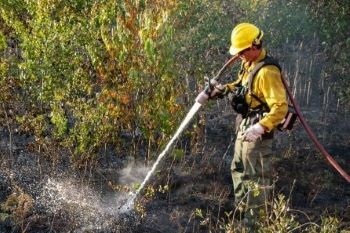
Following a mild winter and last year’s hot, dry conditions, Michigan DNR firefighters are preparing for an early fire season.
In fact, our firefighters have already responded to several wildfires this year, and in 2023 they responded to nearly 400 wildfires. Help them reduce that number by keeping fire safety in mind and taking steps to prevent the nine out of 10 wildfires caused by people.
Check conditions
In Michigan, a burn permit is required for open burning any time the ground is not completely covered by snow.
Before burning yard debris like brush and leaves, check Michigan.gov/BurnPermit to see if weather conditions are safe. A map will show by location whether burning is permitted.
There’s no cost to get a burn permit, and you don’t need to wait for written notice. Getting a burn permit is about taking the important step of checking local conditions before you ever light a match.
“Don’t be a statistic,” said DNR fire prevention specialist Paul Rogers. “The No. 1 cause of wildfire is escaped debris burns. Having a clear understanding of expected weather conditions is critically important when planning any burn.”
In southern Lower Peninsula communities, burn permits are issued by local authorities. Local ordinances for campfires and open burning may be stricter than state or county rules.
Put safety first
Whether you’re cozying close to a warming fire, grilling dinner over an open flame or burning yard debris, follow these tips to keep your fire where it belongs:
- Always keep a water source and metal shovel nearby.
- Never leave a fire unattended, even for a minute.
- Don’t burn on a windy day.
- Completely put out your fire with water every time.
Remember, too, that burning trash, plastic or electronics is illegal, even when open burning is permitted. Responsibly dispose of these items by recycling or through municipal trash service.
For more information, visit Michigan.gov/BurnPermit. Direct media inquiries to DNR fire prevention specialist Paul Rogers at 616-260-8406.
|

The next meeting of the Michigan Natural Resources Commission – Thursday, March 14, in Lansing – leads off with a Fisheries Committee agenda that includes an update on invasive carp, followed by the Wildlife Committee and a presentation by Michigan State University’s Dr. Jerrold Belant on the predation of white-tailed deer in the Upper Peninsula.
The meeting also will cover 40-year service awards for volunteer hunter education instructors, presentation of the DNR Wildlife Division annual report, an update on the state’s deer management initiative, discussions of migratory game bird hunting seasons and elk regulations, a legislative report and several land transactions.
The day starts at 9:30 a.m. at Lansing Community College, Downtown Campus, 600 North Grand Ave. in Lansing. See the draft meeting agenda and remaining 2024 meeting dates at Michigan.gov/NRC.
For more information or to request time to speak at the meeting, email [email protected].
|
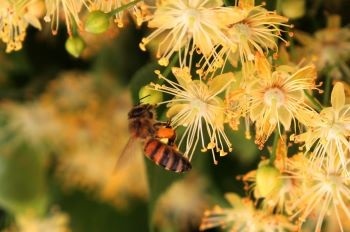
The Michigan Beekeepers Association wants you to plant trees for bees! This group is the oldest continuously operating agricultural organization in the state and one of the oldest beekeeping clubs in the country. Its Trees for Pollinators program helps plant trees for the environment and provide resources for essential pollinators such as honeybees.
“Honeybees are the most important pollinating insects in the world,” said Mike Connor, Michigan Beekeepers Association beekeeper, arborist and founder of the Grand Rapids Bee Club.
Trees for Pollinators took root three years ago when Connor and Michigan Beekeepers Association president Rich Wieske started to encourage people to plant pollen- and nectar-producing trees. Together, the two solidified a plan to make pollinator-friendly trees available through local bee clubs. Wieske sold 100 basswood trees out of the trunk of his car in the first year. In the second year, more than 1,300 flowering trees were planted.
“Trees are meadows in the sky,” said Connor. “Some trees have millions of flowers that provide large quantities of quality nectar and pollen.”
As the Trees for Pollinators program continues, Wieske aims to get more pollinator-friendly trees in the ground by starting a tradition of planting a tree for every child born.
“Given the essential role honeybees play in crop pollination, it’s only sensible that the Michigan Beekeepers Association might commemorate new life by planting a tree to give back to the bees that work to sustain us,” said Wieske.
|
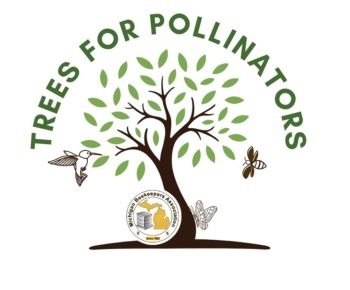
Trees for Pollinators trees are available to purchase through the Michigan Beekeepers Association website through March 17. This year, several trees have been selected to fill pollinator needs:
-
Pussy willows, blooming in April, help bee colonies with pollen and nectar as they emerge in the spring.
-
Flowering crabapples provide nectar and pollen in early May. They also provide winter food for robins and cedar waxwings.
-
Tulip poplars are large trees and produce an exceptionally high nectar yield per flower.
-
American basswoods create high-quality nectar in great quantities for honeybees.
-
Winged sumac produces large quantities of nectar in August, supporting bees and butterflies.
The Michigan Beekeepers Association website shares growing information for each of the trees offered. A portion of proceeds benefits the organization and the local clubs that will distribute trees for pickup in April.
Questions? Visit MichiganBees.org or contact Michigan Beekeepers Association member Lisa Stinson at [email protected].
Get tree planting tips, resources and a planting map from the DNR at Michigan.gov/MiTrees.
|
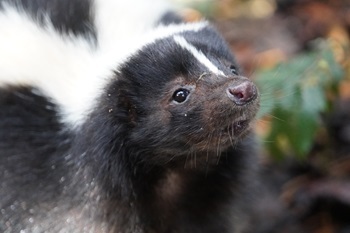
Many Michigan residents know our state has some of the best wildlife-based recreation around! Maintaining those opportunities and keeping animal populations and habitats healthy takes a lot of effort.
Want to see what's going on behind the scenes, learn about native animals and discover simple steps to elevate your conservation game? Check out the DNR's winter 2024 "Wild Times" newsletter. This issue provides quick updates on several topics:
- The striped skunk's (stinky) mating season.
- Responsible wildlife photography.
- Profiles of DNR Wildlife Division staff in southeast Michigan.
- Counting winter waterfowl with the Detroit Bird Alliance.
- Joining the Vernal Pool Patrol.
- 'Wildtalk' podcast: Do crows really have funerals?
- Upcoming event, job, grants and support opportunities.
Learn more about how the DNR cares for wildlife at Michigan.gov/Wildlife.
|
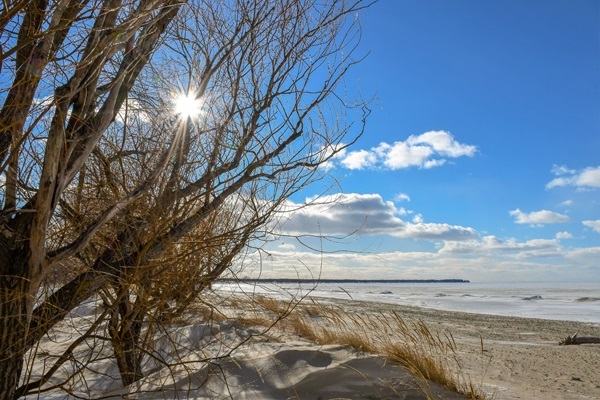 See more pictures by Michigan state parks photo ambassadors at Instagram.com/MiStateParks. For more on the program, call Stephanie Yancer at 989-274-6182. (This photo is by Karen Allmond, for the Michigan DNR, at Port Crescent State Park in Huron County).
|